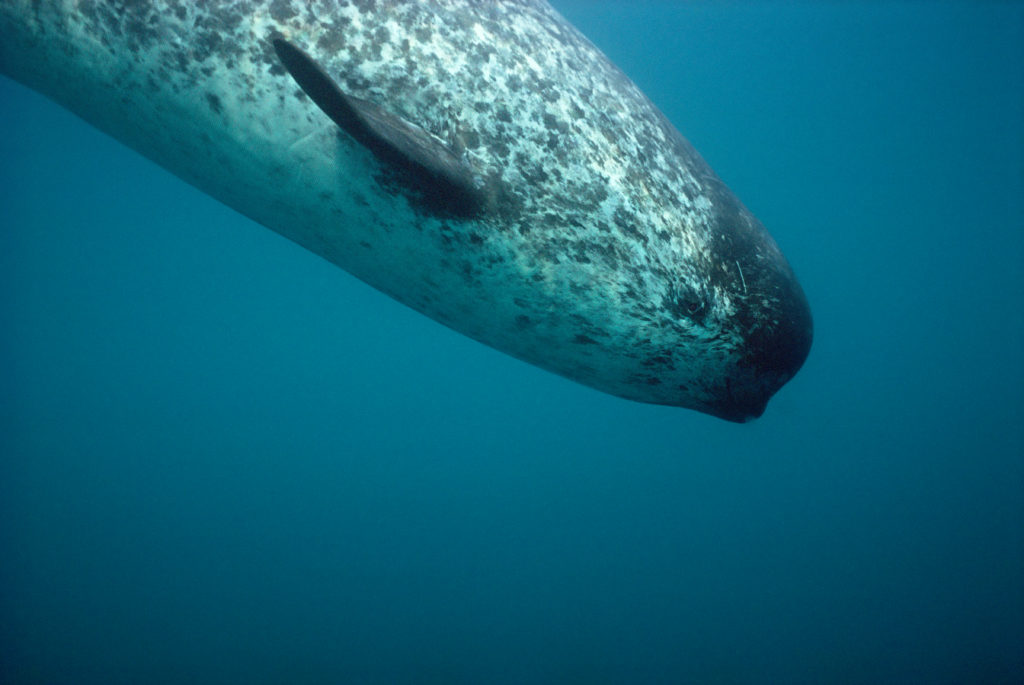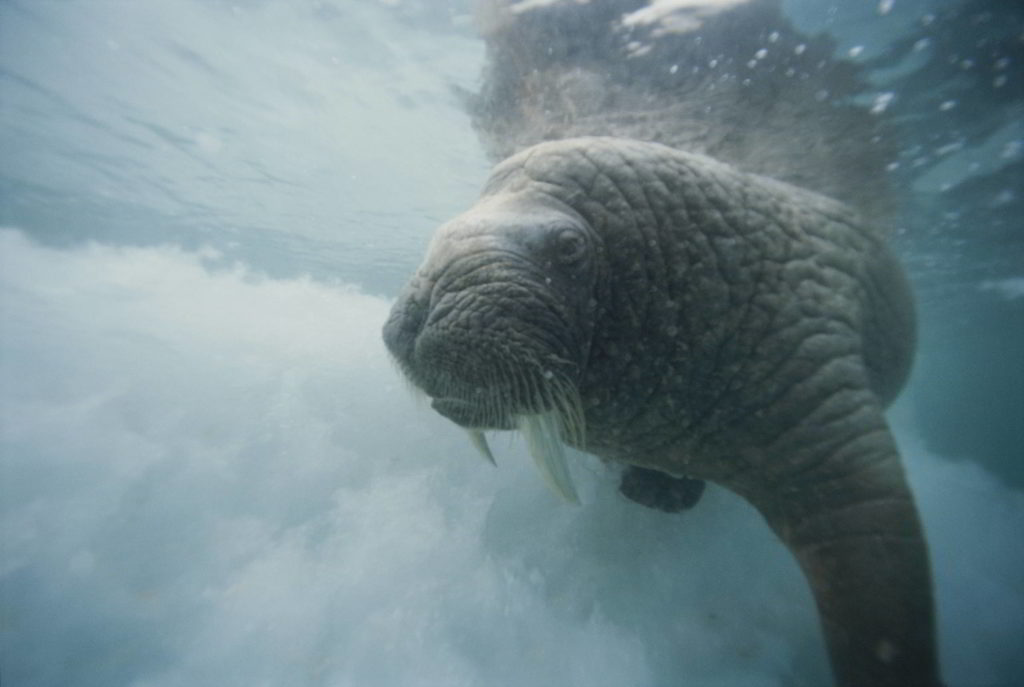Increasing ship traffic means a noisier Arctic Ocean
By Jennifer Brandon
Close your eyes and picture yourself in the middle of a quiet, calm meadow full of flowers. Then imagine you have suddenly been transported to the centre of a thumping, deafening, crowded rock concert. Which one seems like an easier place to have an important conversation with friends, to call out to someone far away, or even to hear yourself think?
It’s a rhetorical question, of course. But a similarly upsetting change is going on right now in Arctic waters.

Thanks to its landscapes of sound-absorbing ice, the Arctic has been one of the world’s least-disturbed ocean environments for centuries, filled only with the natural sounds of marine life. But in the past six years, that serenity has been radically altered by anthropogenic noise — and the marine mammals who live there are struggling to communicate.
A doubling of noise levels
A report by the Arctic Council, supported by research from Applied Ocean Sciences, DW-Ship Consult and the WWF Arctic Programme, found that from 2013 to 2019, underwater noise in the Arctic more than doubled, and increased by even more than that in certain areas. The main source of this increase in noise was more shipping traffic.
Arctic marine mammals evolved to live in a dark, quiet, ice-covered Arctic. With little light penetrating the thick ice, they use sound to “see” their world as well as to navigate, hunt and find potential mates. The higher noise levels caused by ships in the area have decreased their communication ranges by half.
Researchers have also detected increased levels of stress hormones in the species they have studied.
The Arctic’s soundscape is unique because of its cold surface water temperatures and relatively shallow basin, both of which help sound to travel extremely long distances near the surface, where marine mammals come up to breathe. Because of this, just a few ships can greatly increase noise levels throughout the Arctic Circle. For comparison, in a tropical environment, the noise would quickly dissipate.
Not all Arctic marine mammals use the same acoustic frequency (or speed of vibration of sound), and not all frequencies have increased at the same problematic rate. But there is a high degree of overlap between the frequency ranges of ships and of Arctic marine mammals.
In other words, the Arctic is getting louder at the exact same acoustic frequency that many marine mammals use to communicate.
How science can inform policy
To inform policies that will have the power to mitigate the effects of increased shipping noise, scientists must first identify the habitats of the most vulnerable marine mammals where noise has increased significantly. They will then have to measure the specific biological and ecological effects of increased noise pollution on more Arctic marine mammals.

They also have to better monitor noise sources in the Arctic and predict how marine mammals will respond as climate change continues to be a sad and worsening reality in the region. Policymakers should use this information to better manage shipping in the region to protect the majestic, vulnerable animals who live there.
Melting ice is one of the most obvious signs of global climate change in the Arctic. As it continues, new shipping routes will open up and existing routes will stay open for longer than ever.
More ships will mean more underwater noise, more emissions and collisions—and big problems for Arctic marine ecosystems and the marine mammals who call them home.
We must act quickly to manage the increase in Arctic shipping to protect the soundscape for these important animals—before it is too late.
Add your voice to tell Canada we need a strong strategy to stop the spread of underwater noise pollution.
***
JENNIFER BRANDON is a senior scientist and director of communications at Applied Ocean Sciences in California in the United States. This article originally appeared in The Circle: The Arctic Under Pressure.

